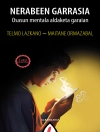This book introduces the concept of Inquiry Graphics, which positions graphics as significant and integrated tools of inquiry in higher education teaching and research. Simply put, the book explores the nuances of thinking and learning with digital images as types of graphics. Although the amount of images in modern life is overwhelming, they have been scarcely explored and understood as integral to concept and knowledge development within higher education practice. This book reflects on why and how digital photographs can be adapted and used in teaching and research contexts. It provides practical examples and applications, as well as theoretical foundations, building on a range of perspectives, such as Peircean triadic sign and approaches to conceptual development. Ultimately, it builds on diverse approaches to make a case for exploring knowledge and analysing concepts and images in a non-dualist and pluralist manner. This unique book will appeal to scholars and students in educationstudies and educational research, media and communication, and anyone interested in applied semiotics, visual and multimodal pedagogy and learning.
Table of Content
PART I. WHY and WHAT.- Chapter 1. Introduction: Why inquiring images in higher education.- Chapter 2. Contemporary higher education landscapes: Challenges for practice.- Chapter 3. Educational semiotics (
edusemiotics) and Peirce’s triadic sign.- Chapter 4. Approaches to images in/for learning: A move to inquiry graphics.- Chapter 5. Concepts re-imagined: eclectic signs beyond definitional rigidity.- Chapter 6. Learning, knowledge, thinking: A guided inquiry with IG.- PART II. HOW and WHAT.- Chapter 7. What is thinking with digital images like?.- Chapter 8. Exploring Inquiry Graphics artefacts in higher education practice.- Chapter 9. Edusemiotic relationality: Messages and implications for education futures.
About the author
Natasa Lackovic is Lecturer at the Educational Research Department at Lancaster University, UK. She is a co-director of Lancaster University’s ‘Re OPEN’, a network focusing on the role of graphic representations in university research, outreach and pedagogy.












